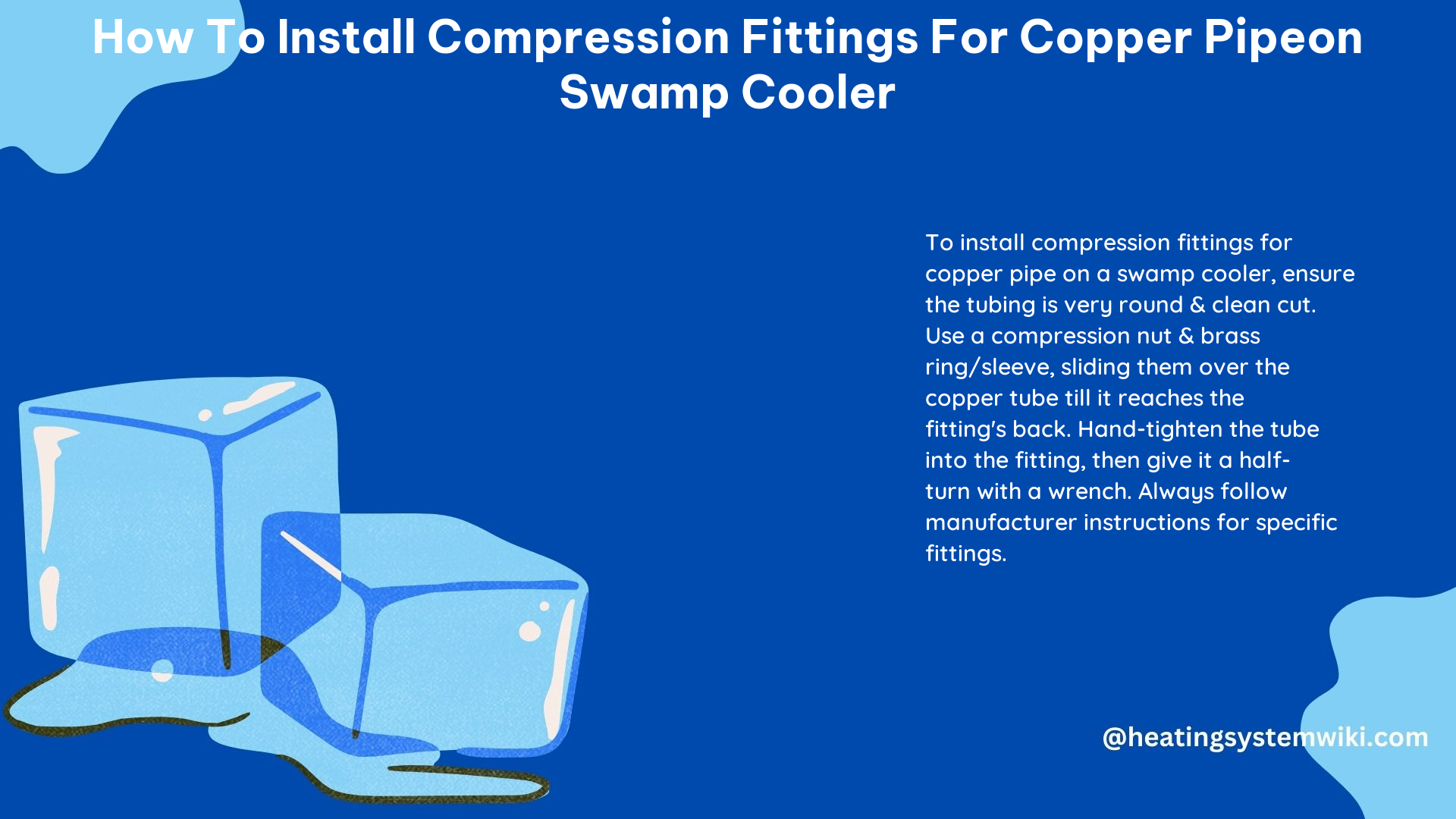Installing compression fittings for copper pipe on a swamp cooler is a crucial step in ensuring a leak-free and efficient cooling system. This comprehensive guide will walk you through the process, providing detailed instructions and expert tips to help you achieve a successful installation.
Gather the Necessary Materials
To begin, you will need the following materials:
- Compression fittings: These include a brass nut, compression sleeve, and a female pipe thread. Ensure you have the correct size fittings for your copper pipe, which can range from 1/8 inch to 2 inches in diameter.
- Copper pipe: Measure the required length for your swamp cooler and cut the pipe accordingly.
- Pipe cutter: This tool will help you make clean, burr-free cuts on the copper pipe.
- Wrench: You’ll need a wrench to tighten the compression fittings.
- Clean surface: Prepare a clean, debris-free work area to ensure the pipe and fittings remain contaminant-free.
Prepare the Copper Pipe

- Measure and Cut: Measure the desired length of the copper pipe and use a pipe cutter to make a clean, square cut. Avoid using a hacksaw, as it can create uneven edges and burrs.
- Deburr the Pipe: After cutting the pipe, use a deburring tool or a fine-grit sandpaper to remove any sharp edges or burrs that may have formed during the cutting process. This step is crucial to prevent damage to the compression fitting and ensure a tight seal.
- Clean the Pipe: Thoroughly clean the end of the copper pipe using a clean cloth or paper towel. Remove any dirt, debris, or contaminants that may have accumulated on the surface. This will help the compression fitting create a secure and leak-free connection.
Install the Compression Fitting
- Slide the Brass Nut and Compression Sleeve: Start by sliding the brass nut onto the copper pipe, followed by the compression sleeve. The smaller end of the compression sleeve should be facing the pipe, while the larger end should be facing the fitting.
- Insert the Pipe into the Fitting: Carefully insert the prepared end of the copper pipe into the female pipe thread of the compression fitting. Ensure the connection is hand-tight.
- Tighten the Compression Fitting: Using a wrench, turn the brass nut one-half of a turn to complete the assembly. Be cautious not to overtighten, as this can damage the pipe or the fitting.
Tips and Specifications
- Compression Fitting Sizes: Compression fittings are available in a wide range of sizes, from 1/8 inch to 2 inches in diameter. Ensure you select the correct size fitting for your copper pipe to prevent leaks or damage.
- Tightening Technique: When tightening the compression fitting, use the wrench to turn the brass nut, not the compression sleeve. Turning the compression sleeve can damage the fitting and cause leaks.
- Lubrication: If you’re having trouble sliding the compression sleeve onto the copper pipe, try using a lubricant such as pipe dope or Teflon tape. This can help the sleeve slide on more easily and create a tighter seal.
- Pipe Cutting: Use a pipe cutter instead of a hacksaw to cut the copper pipe. A pipe cutter will provide a cleaner, more even cut, reducing the risk of damage to the pipe.
- Pipe End Preparation: Before installing the compression fitting, ensure the end of the copper pipe is free of burrs or sharp edges. These can damage the fitting and cause leaks.
By following these detailed instructions and tips, you can successfully install compression fittings for copper pipe on your swamp cooler, ensuring a reliable and long-lasting connection.
Reference:
